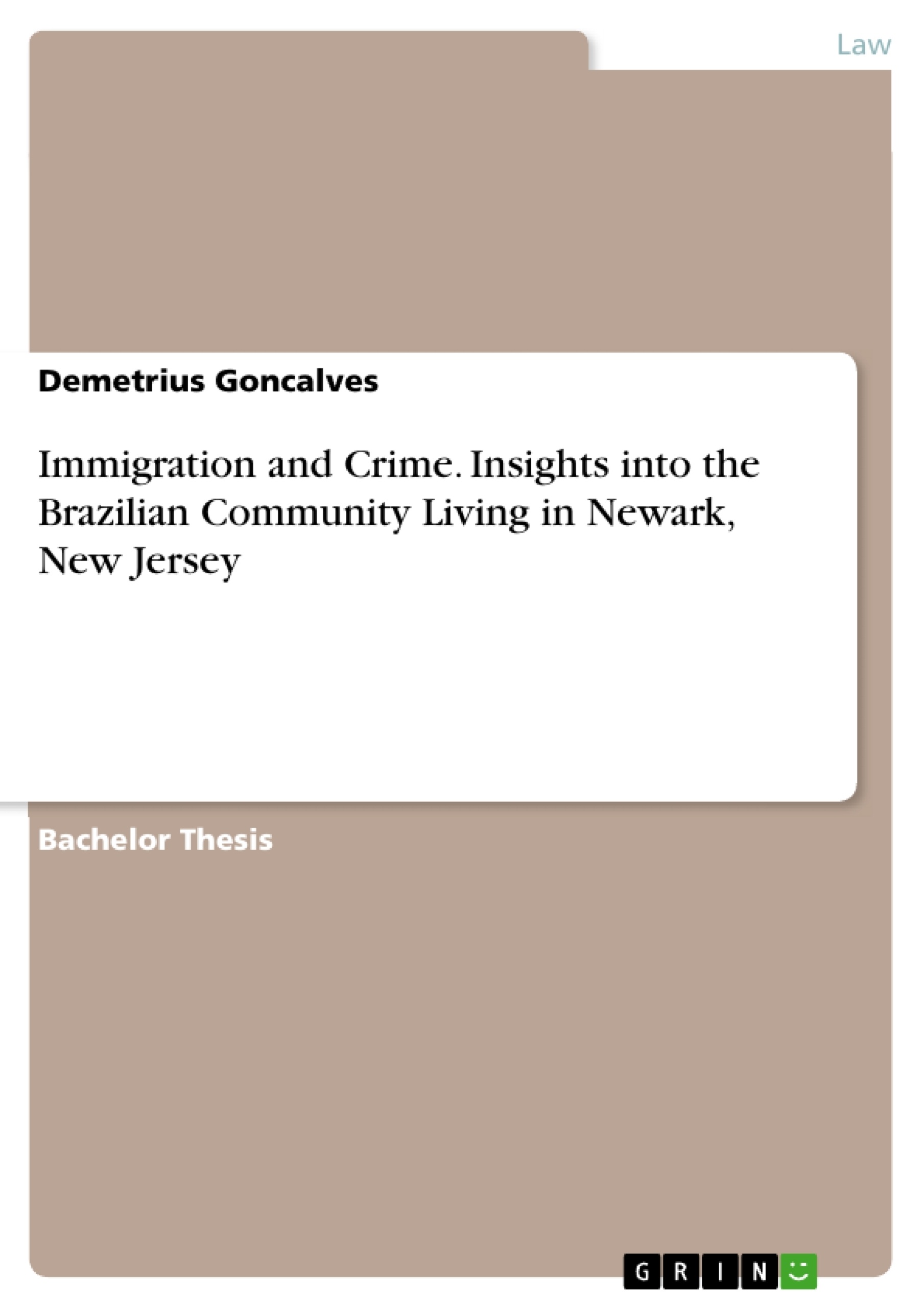This thesis will explore the phenomenon of immigrants bringing crime into America on a micro level. The study points out that the undocumented Brazilian community living in the city of Newark, NJ are rarely involved with crimes. In fact, their strong familial ties, cultural background and eagerness to work have potentially helped to lessen the crime rates in their neighbourhoods.
The research question and objective of this study is to answer the question whether does the undocumented Brazilian community living in Newark make crime rates worse?
The present research is focused on the city of Newark because the city provides a snapshot that paints the bigger picture of what happened in America. While the population of immigrants was increasing, the crime rates were dropping. According to the U.S. Census of 2010-2014, the city is the most populous in the state of New Jersey. Historically, Newark is known for its violent crimes, but more recently for its cultural revival and significant drop on the crime rates.
The relationship between immigration and crime has been debated for over decades, but it was not until recently that this idea started driving public policies; restricting visas, banning international entry, and strengthening border enforcement and now separating children from their families crossing the border illegally. But it is irrefutable that immigration policies should be driven by data, empirical evidence, and foreign relations practices; not by a sociological myth that perceives every undocumented immigrant as a criminal individual.
Inhaltsverzeichnis (Table of Contents)
- ABSTRACT
- INTRODUCTION
- LITERATURE REVIEW
- Neoclassical Economics Model
- Dual Labor Market theory
- New Economics of Migration theory
- Criminal Records
- Safer Communities
- Newark, NJ.
- Hypothesis....
- METHODOLOGY
- Procedures......
- RESULTS
- Demographics
- Motivating Factors...
- Self-Reported Criminal Record
- DISCUSSION.
- CONCLUSION
Zielsetzung und Themenschwerpunkte (Objectives and Key Themes)
This study aims to investigate the relationship between immigration and crime, specifically within the context of the Brazilian community living in Newark, NJ. By exploring the Brazilian population's involvement in criminal activity, the study seeks to challenge the prevalent perception that immigrants contribute to higher crime rates.
- Impact of Immigration on Crime Rates
- Socioeconomic Factors Influencing Immigrant Integration
- Criminalization of Undocumented Immigrants
- The Role of Culture and Family Ties in Crime Prevention
- Empirical Evidence Challenging the "Immigrant Crime" Narrative
Zusammenfassung der Kapitel (Chapter Summaries)
The study delves into the theoretical frameworks underpinning the immigration-crime nexus, drawing on theories such as the neoclassical economics model, dual labor market theory, and the new economics of migration theory. It explores existing research that challenges the notion that immigrants bring crime into the United States, providing a comprehensive overview of the existing literature. The study further investigates the Brazilian population living in Newark, NJ, exploring their demographics, motivating factors for immigration, and self-reported criminal records.
Schlüsselwörter (Keywords)
The study focuses on key terms such as immigration, crime, Newark, NJ, Brazilians, neoclassical economics model, dual labor market theory, new economics of migration theory, criminalization, public safety, and the impact of immigration on crime rates in the context of the Brazilian community in Newark.
- Quote paper
- Demetrius Goncalves (Author), 2018, Immigration and Crime. Insights into the Brazilian Community Living in Newark, New Jersey, Munich, GRIN Verlag, https://www.grin.com/document/920392




